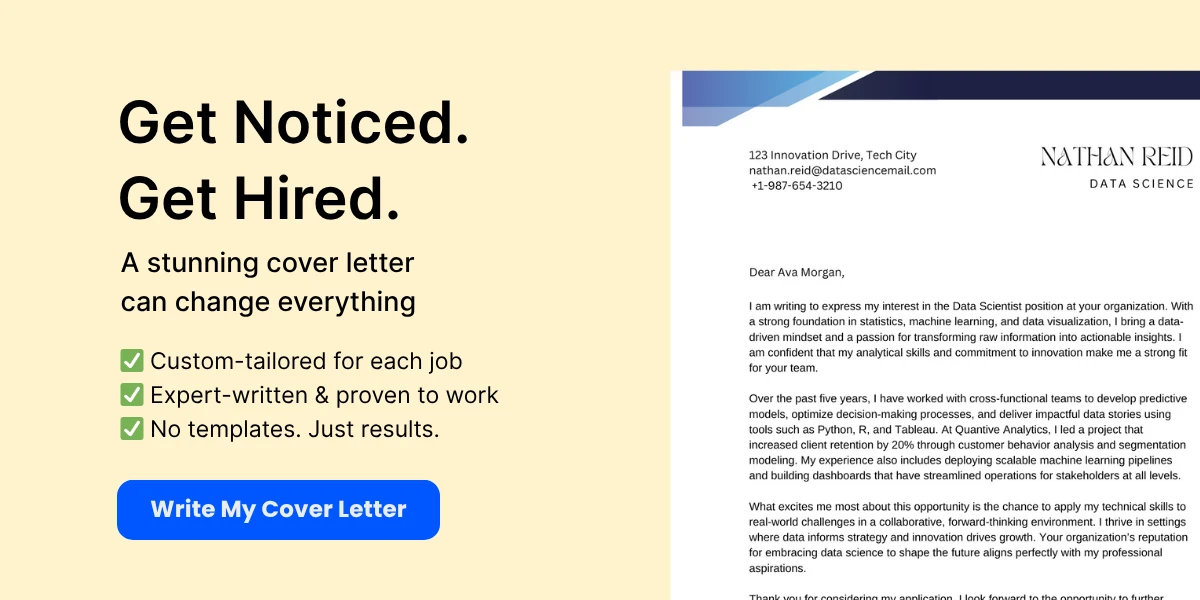In the fast-paced world of logistics and supply chain management, the role of a warehouse manager is pivotal. These professionals are the backbone of efficient operations, ensuring that inventory flows smoothly and that teams work cohesively to meet organizational goals. However, landing a position in this competitive field requires more than just experience; it demands a standout resume that effectively showcases your skills, achievements, and leadership capabilities.
This article delves into the essential elements of a compelling warehouse manager resume, providing you with five tailored examples that highlight various styles and approaches. Whether you are an experienced warehouse manager looking to refresh your resume or a newcomer eager to break into the industry, this guide will equip you with practical tips and insights to enhance your application. You’ll learn how to present your qualifications in a way that captures the attention of hiring managers and sets you apart from the competition.
Join us as we explore the nuances of crafting a powerful resume that not only reflects your professional journey but also aligns with the specific demands of the warehouse management role. By the end of this article, you’ll be well-prepared to create a resume that opens doors to new opportunities in the logistics sector.
Exploring the Role of a Warehouse Manager
Key Responsibilities and Duties
A warehouse manager plays a crucial role in the supply chain, overseeing the efficient operation of a warehouse facility. Their responsibilities encompass a wide range of tasks that ensure the smooth flow of goods in and out of the warehouse. Here are some of the key responsibilities and duties of a warehouse manager:
- Inventory Management: One of the primary responsibilities of a warehouse manager is to maintain accurate inventory levels. This includes tracking stock levels, conducting regular audits, and implementing inventory control systems to minimize discrepancies.
- Staff Supervision: Warehouse managers are responsible for hiring, training, and supervising warehouse staff. This includes assigning tasks, monitoring performance, and ensuring that employees adhere to safety protocols and operational procedures.
- Logistics Coordination: They coordinate the logistics of receiving, storing, and shipping products. This involves scheduling deliveries, managing transportation logistics, and ensuring that products are dispatched in a timely manner.
- Process Optimization: Warehouse managers continuously seek ways to improve operational efficiency. This may involve analyzing workflows, implementing new technologies, and developing best practices to streamline processes.
- Safety Compliance: Ensuring a safe working environment is paramount. Warehouse managers must enforce safety regulations, conduct safety training, and regularly inspect the facility for potential hazards.
- Budget Management: They are often responsible for managing the warehouse budget, which includes controlling costs related to labor, equipment, and supplies. This requires strategic planning and financial acumen.
- Reporting and Analysis: Warehouse managers must prepare reports on inventory levels, order fulfillment rates, and operational efficiency. Analyzing this data helps in making informed decisions and identifying areas for improvement.
Essential Skills and Qualifications
To excel as a warehouse manager, certain skills and qualifications are essential. These not only enhance their ability to perform their duties effectively but also contribute to the overall success of the warehouse operations. Here are some of the key skills and qualifications required:


- Leadership Skills: A warehouse manager must possess strong leadership qualities to motivate and guide their team. This includes effective communication, conflict resolution, and the ability to inspire others to achieve common goals.
- Organizational Skills: Given the complexity of warehouse operations, excellent organizational skills are crucial. Warehouse managers must be able to prioritize tasks, manage multiple projects simultaneously, and maintain a well-structured environment.
- Technical Proficiency: Familiarity with warehouse management systems (WMS) and other technology is essential. This includes understanding software for inventory tracking, order processing, and logistics management.
- Analytical Skills: The ability to analyze data and make data-driven decisions is vital. Warehouse managers should be comfortable interpreting reports and metrics to identify trends and areas for improvement.
- Problem-Solving Skills: Challenges are inevitable in warehouse operations. A successful warehouse manager must be adept at identifying problems quickly and developing effective solutions to mitigate issues.
- Attention to Detail: Precision is key in inventory management and logistics. Warehouse managers must pay close attention to details to avoid errors that could lead to costly mistakes.
- Physical Stamina: While much of the role involves management and oversight, warehouse managers should also be prepared for physical demands, including walking the warehouse floor and occasionally lifting heavy items.
Industry-Specific Requirements
The requirements for warehouse managers can vary significantly depending on the industry in which they operate. Different sectors may have unique challenges, regulations, and operational needs that influence the qualifications and skills required. Here are some industry-specific considerations:
- Retail and E-commerce: In the retail and e-commerce sectors, warehouse managers must be adept at handling high volumes of orders and returns. They should be familiar with fast-paced inventory turnover and the importance of customer satisfaction. Knowledge of e-commerce platforms and fulfillment processes is also beneficial.
- Manufacturing: Warehouse managers in manufacturing environments often deal with raw materials and finished goods. They must understand production schedules and coordinate closely with production managers to ensure that materials are available when needed. Familiarity with just-in-time (JIT) inventory practices can be advantageous.
- Food and Beverage: In the food and beverage industry, warehouse managers must adhere to strict health and safety regulations. This includes understanding food safety standards, temperature control, and proper handling of perishable goods. Certifications in food safety may be required.
- Pharmaceuticals: Warehouse managers in the pharmaceutical sector must comply with stringent regulations regarding the storage and handling of medications. This includes maintaining proper documentation, ensuring temperature-controlled environments, and adhering to Good Distribution Practices (GDP).
- Construction: In the construction industry, warehouse managers may oversee the storage of building materials and equipment. They should be knowledgeable about inventory management for large, bulky items and understand the logistics of delivering materials to job sites.
In addition to these industry-specific requirements, warehouse managers should also stay updated on trends and advancements in warehouse technology, such as automation and robotics, which are increasingly being integrated into warehouse operations across various sectors.
The role of a warehouse manager is multifaceted and requires a blend of technical knowledge, leadership skills, and industry-specific expertise. By understanding the key responsibilities, essential skills, and industry-specific requirements, aspiring warehouse managers can better prepare themselves for a successful career in this dynamic field.
Resume Writing Fundamentals
Structuring Your Resume
Creating a well-structured resume is crucial for any warehouse manager looking to make a strong impression on potential employers. A clear and organized layout not only enhances readability but also allows hiring managers to quickly identify your qualifications and experience. Here’s how to structure your warehouse manager resume effectively:
1. Contact Information
Your resume should start with your contact information at the top. This includes your full name, phone number, email address, and LinkedIn profile (if applicable). Make sure this information is easy to find and read. For example:
John Doe (123) 456-7890 [email protected] linkedin.com/in/johndoe
2. Professional Summary
Next, include a professional summary or objective statement. This section should be a brief overview of your experience, skills, and what you bring to the table as a warehouse manager. Aim for 2-3 sentences that highlight your key achievements and career goals. For instance:


Results-driven warehouse manager with over 8 years of experience in logistics and supply chain management. Proven track record of optimizing warehouse operations, reducing costs, and improving inventory accuracy. Seeking to leverage expertise in a challenging new role at XYZ Logistics.
3. Skills Section
Following your summary, list your relevant skills. This section should be tailored to the job description and include both hard and soft skills. Examples of skills for a warehouse manager might include:
- Inventory Management
- Team Leadership
- Logistics Coordination
- Safety Compliance
- Data Analysis
- Forklift Operation
4. Professional Experience
The professional experience section is the heart of your resume. List your work history in reverse chronological order, starting with your most recent position. For each job, include the following:
- Job Title
- Company Name, Location
- Dates of Employment
- Key Responsibilities and Achievements
Use bullet points for clarity and start each point with action verbs. Quantify your achievements where possible. For example:
Warehouse Manager ABC Distribution Center, New York, NY June 2018 - Present - Managed a team of 25 warehouse staff, improving productivity by 30% through effective training and motivation. - Implemented a new inventory management system that reduced stock discrepancies by 15%. - Developed safety protocols that led to a 40% decrease in workplace accidents.
5. Education
Include your educational background, starting with the most recent degree. Mention the degree obtained, the institution, and the graduation year. If you have relevant certifications (like OSHA training or a forklift operator license), list them here as well:
Bachelor of Science in Logistics and Supply Chain Management University of California, Los Angeles Graduated: 2015 Certifications: - OSHA Forklift Operator Certification - Certified Supply Chain Professional (CSCP)
6. Additional Sections
Depending on your experience, you may want to include additional sections such as:


- Professional Affiliations: Memberships in relevant organizations (e.g., Warehousing Education and Research Council).
- Volunteer Experience: Any relevant volunteer work that showcases your leadership or organizational skills.
- Languages: If you speak multiple languages, this can be a valuable asset in diverse work environments.
Tailoring Your Resume for the Job
One of the most effective strategies for landing a warehouse manager position is to tailor your resume for each job application. This means customizing your resume to align with the specific requirements and responsibilities outlined in the job description. Here’s how to do it:
1. Analyze the Job Description
Start by carefully reading the job description. Highlight keywords and phrases that indicate the skills and experiences the employer values most. For example, if the job emphasizes “inventory control” and “team leadership,” make sure these terms are prominent in your resume.
2. Match Your Skills and Experience
Once you have identified the key requirements, match your skills and experiences to them. If the job requires experience with a specific inventory management system, ensure you mention your proficiency with that system in your skills section or professional experience. Use the same language as the job description to make it easier for applicant tracking systems (ATS) to recognize your qualifications.
3. Highlight Relevant Achievements
In your professional experience section, prioritize achievements that are most relevant to the job you’re applying for. If you successfully implemented a new process that improved efficiency, and the job description mentions a need for process improvement, make sure to highlight that achievement prominently.
4. Adjust Your Professional Summary
Your professional summary should also be tailored. If the job emphasizes leadership, you might revise your summary to focus more on your management experience and successes in leading teams. For example:
Dynamic warehouse manager with over 10 years of experience leading high-performing teams in fast-paced environments. Expert in optimizing operations and driving efficiency improvements. Committed to fostering a culture of safety and excellence.
Common Mistakes to Avoid
When crafting your warehouse manager resume, it’s essential to avoid common pitfalls that can undermine your chances of landing an interview. Here are some mistakes to watch out for:
1. Using a Generic Resume
One of the biggest mistakes candidates make is submitting a generic resume for every job application. A one-size-fits-all approach can lead to missed opportunities. Always tailor your resume to the specific job you’re applying for, as discussed earlier.


2. Focusing on Duties Instead of Achievements
Many candidates list their job duties rather than their achievements. Instead of saying, “Responsible for managing inventory,” say, “Reduced inventory discrepancies by 20% through the implementation of a new tracking system.” Focus on what you accomplished in each role.
3. Neglecting Formatting
A cluttered or overly complex format can make your resume difficult to read. Stick to a clean, professional layout with consistent fonts and spacing. Use bullet points for easy scanning and avoid excessive graphics or colors that can distract from the content.
4. Including Irrelevant Information
Keep your resume focused on your warehouse management experience and relevant skills. Avoid including unrelated jobs or outdated skills that do not pertain to the position. This helps keep your resume concise and impactful.
5. Spelling and Grammar Errors
Typos and grammatical errors can create a negative impression. Always proofread your resume multiple times and consider asking a friend or colleague to review it as well. Tools like Grammarly can also help catch mistakes.
By following these resume writing fundamentals, you can create a compelling and effective resume that showcases your qualifications as a warehouse manager. Remember, your resume is often your first impression with potential employers, so make it count!
Warehouse Manager Resume Examples
Example 1: Entry-Level Warehouse Manager
An entry-level warehouse manager resume should highlight relevant skills, education, and any hands-on experience in warehouse operations. This resume is typically for candidates who have recently graduated or have limited experience in the field.


Key Features
- Contact Information: Include a professional email address and phone number.
- Objective Statement: A brief statement that outlines career goals and what the candidate hopes to achieve in the warehouse management role.
- Education: List relevant degrees or certifications, such as a degree in logistics or supply chain management.
- Experience: Highlight any internships, part-time jobs, or volunteer work related to warehouse operations.
- Skills: Emphasize skills such as inventory management, team leadership, and familiarity with warehouse management systems (WMS).
Strengths and Areas for Improvement
Strengths: Entry-level candidates often bring fresh perspectives and a willingness to learn. They may also have up-to-date knowledge of the latest technologies and practices in warehouse management.
Areas for Improvement: Limited experience may be a drawback, so candidates should focus on transferable skills and relevant coursework to demonstrate their potential.
Example 2: Mid-Level Warehouse Manager
A mid-level warehouse manager resume should reflect a solid track record of experience in warehouse operations, showcasing leadership abilities and achievements in improving efficiency and productivity.
Key Features
- Contact Information: Ensure it is up-to-date and professional.
- Professional Summary: A concise summary that highlights years of experience, key achievements, and management style.
- Work Experience: Detail previous roles, focusing on responsibilities such as managing teams, overseeing inventory, and implementing process improvements.
- Achievements: Quantify accomplishments, such as reducing operational costs by a percentage or improving order fulfillment rates.
- Skills: Include both hard and soft skills, such as proficiency in WMS, leadership, problem-solving, and communication.
Strengths and Areas for Improvement
Strengths: Mid-level candidates often have a proven track record of success and can demonstrate their ability to lead teams and manage complex operations.
Areas for Improvement: They may need to focus on further developing strategic thinking and advanced management skills to prepare for senior roles.
Example 3: Senior Warehouse Manager
A senior warehouse manager resume should reflect extensive experience and a history of strategic leadership in warehouse operations. This resume is for candidates who have held senior positions and have a deep understanding of the industry.


Key Features
- Contact Information: Professional and easy to find.
- Executive Summary: A powerful summary that encapsulates years of experience, leadership roles, and key contributions to previous employers.
- Professional Experience: Highlight senior roles, focusing on strategic initiatives, budget management, and cross-departmental collaboration.
- Key Achievements: Use metrics to showcase significant improvements, such as increasing warehouse efficiency by a specific percentage or leading successful projects.
- Skills: Emphasize advanced skills such as strategic planning, change management, and team development.
Strengths and Areas for Improvement
Strengths: Senior candidates bring a wealth of experience and a strategic mindset, making them valuable assets to any organization.
Areas for Improvement: They may need to stay updated on emerging technologies and trends in warehouse management to maintain a competitive edge.
Example 4: Warehouse Manager with Specialized Skills
This resume is tailored for warehouse managers who possess specialized skills, such as expertise in hazardous materials handling, cold storage management, or advanced technology integration.
Key Features
- Contact Information: Clear and professional.
- Specialization Summary: A brief overview of specialized skills and certifications relevant to the warehouse management role.
- Relevant Experience: Focus on positions that required specialized knowledge, detailing specific responsibilities and achievements.
- Certifications: List any relevant certifications, such as OSHA training or certifications in specific warehouse technologies.
- Skills: Highlight specialized skills, such as knowledge of safety regulations, inventory control systems, or specific software.
Strengths and Areas for Improvement
Strengths: Specialized skills can set candidates apart in a competitive job market, showcasing their ability to handle unique challenges.
Areas for Improvement: Candidates should ensure they can communicate their specialized knowledge effectively to non-experts in the field.
Example 5: Warehouse Manager in a Niche Industry
This resume is designed for warehouse managers working in niche industries, such as pharmaceuticals, automotive, or e-commerce, where specific knowledge and skills are crucial.


Key Features
- Contact Information: Professional and easy to locate.
- Industry-Specific Summary: A summary that highlights experience in the niche industry and understanding of its unique challenges.
- Work Experience: Detail positions held in the niche industry, focusing on relevant responsibilities and achievements.
- Industry Knowledge: Emphasize knowledge of industry regulations, standards, and best practices.
- Skills: Include both general warehouse management skills and those specific to the niche industry.
Strengths and Areas for Improvement
Strengths: Candidates with niche industry experience can demonstrate their ability to navigate specific challenges and regulations, making them highly desirable.
Areas for Improvement: They should be prepared to adapt their skills to broader warehouse management practices if they wish to transition to other industries.
Crafting an Effective Resume Summary
In the competitive field of warehouse management, a well-crafted resume summary can be the key to capturing the attention of hiring managers. This brief yet impactful section of your resume serves as your elevator pitch, summarizing your qualifications, experience, and what you bring to the table. We will explore what to include in a resume summary, provide examples of strong resume summaries, and discuss how to tailor your summary to the job description.
What to Include in a Resume Summary
A resume summary should be concise, typically ranging from 2 to 4 sentences, and should highlight your most relevant skills and experiences. Here are the essential components to include:
- Professional Title: Start with your current or most relevant job title. This immediately informs the reader of your professional identity.
- Years of Experience: Mention how many years you have worked in warehouse management or related fields. This establishes your level of expertise.
- Key Skills: Highlight 2-3 core competencies that are particularly relevant to the job you are applying for. These could include inventory management, team leadership, or safety compliance.
- Achievements: Include a notable achievement or two that demonstrates your impact in previous roles. This could be a percentage increase in efficiency, cost savings, or successful project completions.
- Career Goals: Briefly mention your career aspirations, especially if they align with the company’s goals. This shows that you are forward-thinking and invested in your professional growth.
By incorporating these elements, your resume summary will provide a snapshot of your qualifications and entice the reader to learn more about you.
Examples of Strong Resume Summaries
To illustrate how to effectively craft a resume summary, here are several examples tailored for different levels of experience and specific roles within warehouse management:
Example 1: Entry-Level Warehouse Manager
“Detail-oriented and motivated recent graduate with a Bachelor’s degree in Supply Chain Management and hands-on experience in warehouse operations. Proven ability to manage inventory and streamline processes during internships, resulting in a 15% reduction in order fulfillment time. Eager to leverage strong organizational skills and a passion for logistics to contribute to the efficiency of ABC Logistics.”
Example 2: Mid-Level Warehouse Manager
“Results-driven Warehouse Manager with over 5 years of experience in optimizing warehouse operations and leading teams of up to 20 staff members. Expertise in inventory management, safety compliance, and process improvement, achieving a 30% increase in productivity in the last role. Committed to fostering a culture of safety and efficiency while driving operational excellence at XYZ Distribution.”
Example 3: Senior Warehouse Manager
“Dynamic Senior Warehouse Manager with 10+ years of experience in large-scale distribution centers. Proven track record of implementing innovative inventory management systems that reduced costs by 25% and improved order accuracy by 40%. Adept at leading cross-functional teams and developing training programs that enhance employee performance. Seeking to leverage extensive expertise in logistics and supply chain management to drive operational success at DEF Supply Chain Solutions.”
Example 4: Warehouse Operations Director
“Strategic Warehouse Operations Director with over 15 years of experience in overseeing multi-site operations and driving continuous improvement initiatives. Expert in supply chain optimization, budget management, and team leadership, with a history of achieving operational goals and enhancing customer satisfaction. Passionate about leveraging data analytics to inform decision-making and improve warehouse efficiency at GHI Logistics.”
Example 5: Warehouse Supervisor
“Dedicated Warehouse Supervisor with 7 years of experience in managing daily operations and leading teams in fast-paced environments. Skilled in inventory control, staff training, and safety compliance, with a proven ability to reduce operational costs by 20% through process improvements. Looking to bring strong leadership and problem-solving skills to JKL Warehousing.”
Tailoring Your Summary to the Job Description
One of the most effective ways to make your resume summary stand out is by tailoring it to the specific job description. Here’s how to do it:
- Analyze the Job Description: Carefully read the job posting and identify key skills, qualifications, and responsibilities that the employer emphasizes. Take note of any specific terminology or phrases used.
- Match Your Skills: Compare your own skills and experiences with those highlighted in the job description. Choose the most relevant ones to include in your summary.
- Use Keywords: Incorporate keywords from the job description into your summary. This not only shows that you are a good fit for the role but also helps your resume get past Applicant Tracking Systems (ATS) that many companies use to screen candidates.
- Highlight Relevant Achievements: If the job description mentions a specific goal, such as improving efficiency or reducing costs, include an achievement that demonstrates your ability to meet that goal.
- Reflect the Company Culture: If the company values teamwork, innovation, or customer service, consider weaving these themes into your summary to show that you align with their culture.
For example, if a job description emphasizes the need for strong leadership skills and experience in inventory management, your tailored summary might read:
“Proven Warehouse Manager with over 8 years of experience leading teams and managing inventory in high-volume environments. Recognized for implementing effective training programs that improved team performance by 25% and for developing inventory control systems that reduced discrepancies by 30%. Excited to bring my leadership skills and commitment to operational excellence to MNO Logistics.”
By customizing your resume summary for each application, you increase your chances of making a strong impression and landing an interview.
A compelling resume summary is a critical component of your warehouse manager resume. By including the right elements, using strong examples, and tailoring your summary to the job description, you can effectively showcase your qualifications and set yourself apart from other candidates. Remember, this is your opportunity to make a memorable first impression, so take the time to craft a summary that truly reflects your skills and aspirations.
Highlighting Key Skills and Achievements
When crafting a resume for a warehouse manager position, it is crucial to effectively highlight your key skills and achievements. This section of your resume serves as a snapshot of your capabilities and accomplishments, allowing potential employers to quickly assess your fit for the role. In this guide, we will explore how to identify relevant skills, showcase achievements with metrics, and utilize action verbs and keywords to create a compelling resume.
Identifying Relevant Skills
To stand out in the competitive field of warehouse management, you must first identify the skills that are most relevant to the position. Warehouse managers are responsible for overseeing the daily operations of a warehouse, which includes inventory management, staff supervision, and ensuring compliance with safety regulations. Here are some key skills to consider:
- Inventory Management: Proficiency in managing stock levels, conducting regular audits, and utilizing inventory management software.
- Leadership: Ability to lead and motivate a team, fostering a positive work environment and ensuring high levels of productivity.
- Logistics Coordination: Experience in coordinating the movement of goods, optimizing shipping and receiving processes, and managing transportation logistics.
- Safety Compliance: Knowledge of OSHA regulations and best practices for maintaining a safe working environment.
- Problem-Solving: Strong analytical skills to identify issues and implement effective solutions quickly.
- Communication: Excellent verbal and written communication skills for effective interaction with team members, suppliers, and management.
- Technology Proficiency: Familiarity with warehouse management systems (WMS), barcode scanning technology, and other relevant software.
When listing your skills, tailor them to match the job description of the position you are applying for. This not only demonstrates your suitability for the role but also helps your resume pass through Applicant Tracking Systems (ATS) that many companies use to filter candidates.
Showcasing Achievements with Metrics
Employers are not just interested in your responsibilities; they want to see the impact you have made in your previous roles. One of the most effective ways to showcase your achievements is by using metrics. Quantifying your accomplishments provides concrete evidence of your capabilities and helps you stand out from other candidates. Here are some tips for showcasing your achievements:
- Use Specific Numbers: Instead of saying you “managed inventory,” specify that you “managed an inventory of over 10,000 SKUs.” This gives a clearer picture of your experience.
- Highlight Cost Savings: If you implemented a new process that saved the company money, quantify that savings. For example, “Reduced shipping costs by 15% through renegotiation of vendor contracts.”
- Demonstrate Efficiency Improvements: If you improved operational efficiency, provide metrics. For instance, “Increased order fulfillment speed by 25% by streamlining the picking process.”
- Showcase Team Performance: If you led a team, highlight their achievements under your leadership. For example, “Led a team of 20 warehouse staff to achieve a 98% accuracy rate in order fulfillment.”
Here’s an example of how to present your achievements effectively:
Warehouse Manager
ABC Logistics, City, State
January 2020 – Present
– Managed a team of 15 warehouse associates, achieving a 30% increase in productivity through training and process optimization.
– Implemented a new inventory tracking system that reduced stock discrepancies by 40%, saving the company $50,000 annually.
– Coordinated the successful relocation of the warehouse, resulting in a 20% reduction in operational costs.
Using Action Verbs and Keywords
To make your resume more dynamic and engaging, it is essential to use strong action verbs and relevant keywords. Action verbs convey a sense of accomplishment and initiative, while keywords help your resume align with the job description. Here are some effective action verbs to consider:
- Achieved
- Implemented
- Streamlined
- Coordinated
- Optimized
- Supervised
- Trained
- Reduced
- Increased
- Managed
Incorporating these action verbs into your resume can help you convey your accomplishments more powerfully. For example:
Warehouse Supervisor
XYZ Distribution, City, State
March 2018 – December 2019
– Supervised daily operations of a 50,000 sq. ft. warehouse, ensuring compliance with safety regulations and company policies.
– Trained new employees on warehouse procedures, resulting in a 20% decrease in onboarding time.
– Optimized inventory layout, leading to a 15% increase in picking efficiency.
In addition to action verbs, be sure to include industry-specific keywords that align with the job description. This not only helps your resume get noticed by ATS but also demonstrates your familiarity with the industry. Keywords might include:
- Warehouse Management Systems (WMS)
- Logistics
- Supply Chain Management
- Inventory Control
- Shipping and Receiving
- Forklift Operation
- Quality Assurance
By strategically incorporating these keywords throughout your resume, you can enhance your chances of being selected for an interview.
Highlighting your key skills and achievements is a critical component of a successful warehouse manager resume. By identifying relevant skills, showcasing your achievements with metrics, and using action verbs and keywords, you can create a compelling resume that captures the attention of hiring managers and sets you apart from the competition.
Detailing Work Experience
When crafting a resume for a warehouse manager position, the work experience section is arguably the most critical component. This section not only showcases your professional history but also highlights your skills, achievements, and the value you can bring to a potential employer. In this guide, we will explore how to structure your work experience section, write impactful job descriptions, and demonstrate your career progression effectively.
Structuring Your Work Experience Section
The structure of your work experience section can significantly influence how hiring managers perceive your qualifications. Here are some key elements to consider:
- Reverse Chronological Order: List your work experience starting with your most recent position and working backward. This format allows employers to see your latest accomplishments first, which is particularly important in fast-paced industries like warehousing.
- Job Title and Company Name: Clearly state your job title and the name of the company you worked for. This information should be bolded or highlighted to make it stand out.
- Location and Dates of Employment: Include the city and state of the company, along with the dates you were employed (month and year). This provides context for your experience and shows your tenure at each position.
- Bullet Points for Responsibilities and Achievements: Use bullet points to list your key responsibilities and achievements in each role. This format is easier to read and allows you to highlight your most significant contributions effectively.
Here’s an example of how to structure your work experience section:
Warehouse Manager - ABC Logistics, New York, NY June 2018 - Present
- Oversaw daily warehouse operations, managing a team of 25 employees to ensure efficient workflow and adherence to safety protocols.
- Implemented a new inventory management system that reduced stock discrepancies by 30% and improved order fulfillment times by 20%.
- Developed and executed training programs for new hires, resulting in a 15% increase in employee retention rates.
- Assisted in managing warehouse operations, including inventory control, shipping, and receiving.
- Coordinated with suppliers and logistics partners to streamline the supply chain process, reducing delivery times by 10%.
- Conducted regular safety audits and training sessions, leading to a 25% decrease in workplace accidents.
Writing Impactful Job Descriptions
Each job description should not only outline your responsibilities but also emphasize your achievements and the impact of your work. Here are some tips for writing impactful job descriptions:
- Use Action Verbs: Start each bullet point with a strong action verb to convey your contributions effectively. Words like “managed,” “implemented,” “developed,” and “optimized” demonstrate initiative and leadership.
- Quantify Achievements: Whenever possible, use numbers to quantify your achievements. For example, instead of saying “improved efficiency,” say “increased efficiency by 25% through process optimization.” This provides concrete evidence of your capabilities.
- Focus on Results: Highlight the results of your actions. Employers want to know how your contributions benefited the company. For instance, “Reduced operational costs by 15% through strategic vendor negotiations” shows a direct impact on the bottom line.
- Tailor Descriptions to the Job: Customize your job descriptions to align with the specific requirements of the warehouse manager position you are applying for. Use keywords from the job description to demonstrate that you possess the skills and experience they are seeking.
Here’s an example of an impactful job description:
Warehouse Manager - ABC Logistics, New York, NY June 2018 - Present
- Managed a team of 25 warehouse staff, fostering a culture of safety and efficiency that resulted in a 40% reduction in workplace incidents.
- Implemented a new inventory tracking system that improved accuracy by 35%, leading to a 20% increase in customer satisfaction ratings.
- Streamlined the shipping process, reducing average delivery times from 5 days to 3 days, which contributed to a 15% increase in repeat business.
Demonstrating Career Progression
Employers are often interested in candidates who show a clear trajectory of growth and development in their careers. Demonstrating career progression can set you apart from other candidates. Here are some strategies to effectively showcase your career advancement:
- Highlight Promotions: If you have been promoted within a company, make sure to highlight this in your resume. For example, if you started as a warehouse associate and moved up to a warehouse manager, clearly indicate this progression in your work experience section.
- Showcase Increased Responsibilities: Even if you haven’t had formal promotions, you may have taken on additional responsibilities over time. Describe how your role evolved and the new skills you acquired. For instance, “Promoted from Warehouse Associate to Assistant Manager, taking on additional responsibilities such as inventory management and team training.”
- Include Relevant Certifications and Training: If you have pursued additional training or certifications related to warehouse management, include these in your resume. This demonstrates your commitment to professional development and your readiness for increased responsibilities.
- Use a Career Summary: Consider including a brief career summary at the top of your resume that outlines your career progression. This can provide context for your work experience and highlight your growth in the industry.
Here’s an example of how to demonstrate career progression:
Career Summary: Dynamic warehouse management professional with over 8 years of experience in logistics and supply chain management. Proven track record of increasing operational efficiency and reducing costs through innovative solutions and team leadership. Progressed from Warehouse Associate to Warehouse Manager, demonstrating a commitment to professional growth and excellence in warehouse operations. Warehouse Manager - ABC Logistics, New York, NY June 2018 - Present
- ...
- ...
- Assisted in daily warehouse operations, including inventory management and order fulfillment.
- Recognized for outstanding performance and promoted to Assistant Warehouse Manager within two years.
By structuring your work experience section effectively, writing impactful job descriptions, and demonstrating your career progression, you can create a compelling resume that captures the attention of hiring managers and showcases your qualifications as a warehouse manager.
Education and Certifications
Relevant Educational Background
When it comes to crafting a compelling resume for a warehouse manager position, your educational background plays a crucial role. While many warehouse management roles do not require a specific degree, having a relevant educational background can significantly enhance your candidacy. Here are some common educational paths that can benefit aspiring warehouse managers:
- Associate’s Degree in Logistics or Supply Chain Management: This degree provides foundational knowledge in logistics, inventory management, and supply chain operations. It equips candidates with the skills needed to manage warehouse operations effectively.
- Bachelor’s Degree in Business Administration: A degree in business administration can be advantageous, as it covers essential management principles, finance, and operations. This broad knowledge base is beneficial for overseeing warehouse staff and optimizing processes.
- Technical Certifications: Some candidates may pursue technical certifications related to warehouse management systems (WMS) or inventory control. These certifications demonstrate a commitment to staying current with industry technologies and practices.
While formal education is valuable, practical experience often weighs heavily in the hiring process. Many successful warehouse managers have climbed the ranks from entry-level positions, gaining hands-on experience that complements their educational background. Therefore, if you lack a formal degree, focus on highlighting your relevant experience and skills.
Important Certifications for Warehouse Managers
Certifications can set you apart from other candidates by showcasing your expertise and commitment to professional development. Here are some of the most recognized certifications for warehouse managers:
- Certified Supply Chain Professional (CSCP): Offered by the Association for Supply Chain Management (ASCM), this certification covers the entire supply chain, including warehousing, logistics, and inventory management. It demonstrates a comprehensive understanding of supply chain processes.
- Certified in Production and Inventory Management (CPIM): Also provided by ASCM, the CPIM certification focuses on production and inventory management, emphasizing the importance of effective inventory control in warehouse operations.
- Warehouse Management Certification (WMC): This certification is specifically designed for warehouse professionals and covers topics such as warehouse design, inventory management, and technology integration. It is ideal for those looking to specialize in warehouse management.
- Lean Six Sigma Certification: Lean Six Sigma methodologies focus on process improvement and waste reduction. A certification in this area can help warehouse managers streamline operations and enhance efficiency.
- Forklift Operator Certification: While not a management certification, having a forklift operator certification can be beneficial. It demonstrates a hands-on understanding of warehouse operations and safety protocols.
When pursuing certifications, consider your career goals and the specific requirements of the positions you are targeting. Certifications can require a significant investment of time and money, so choose those that align with your aspirations and the needs of the industry.
How to Present Education and Certifications on Your Resume
Effectively presenting your education and certifications on your resume is essential for making a strong impression on potential employers. Here are some tips on how to structure this section:
1. Create a Dedicated Section
Consider creating a dedicated section titled “Education and Certifications” or “Qualifications” to highlight your academic achievements and certifications. This makes it easy for hiring managers to locate this information quickly.
2. List Your Education in Reverse Chronological Order
Start with your most recent educational experience and work backward. Include the following details for each entry:
- Degree or Certification Title: Clearly state the name of the degree or certification.
- Institution Name: Include the name of the college, university, or certifying body.
- Location: Specify the city and state of the institution.
- Graduation Date: Include the month and year of graduation or the date you received the certification.
For example:
Bachelor of Science in Business Administration
University of XYZ, City, State
Graduated: May 2020
3. Highlight Relevant Certifications
List your certifications in a similar format, ensuring to include the certification title, the certifying organization, and the date obtained. If applicable, you can also include the expiration date for certifications that require renewal.
For example:
Certified Supply Chain Professional (CSCP)
Association for Supply Chain Management (ASCM)
Obtained: June 2021
4. Use Bullet Points for Clarity
Utilize bullet points to present your education and certifications clearly. This format enhances readability and allows hiring managers to scan your qualifications quickly.
5. Include Relevant Coursework (if applicable)
If you have completed coursework that is particularly relevant to warehouse management, consider including it under your degree. This can be especially useful for recent graduates who may not have extensive work experience.
For example:
Bachelor of Science in Logistics Management
University of ABC, City, State
Graduated: May 2022
Relevant Coursework: Inventory Management, Supply Chain Strategy, Warehouse Operations
6. Tailor Your Resume for Each Application
When applying for different warehouse manager positions, tailor your education and certifications section to align with the specific requirements of each job. Highlight the most relevant qualifications that match the job description, ensuring that your resume stands out to hiring managers.
7. Keep It Concise
While it’s important to provide enough detail, avoid overwhelming the reader with excessive information. Keep your education and certifications section concise, focusing on the most relevant and impressive qualifications.
By following these guidelines, you can effectively present your education and certifications on your warehouse manager resume, enhancing your chances of landing an interview. Remember, your qualifications are a key component of your overall professional profile, so take the time to showcase them thoughtfully and strategically.
Formatting and Design Tips
Choosing the Right Resume Format
When crafting a resume, the format you choose can significantly impact how your qualifications are perceived by potential employers. For warehouse managers, who often juggle multiple responsibilities, selecting the right format is crucial to highlight your skills and experience effectively. Here are the three most common resume formats:
- Chronological Resume: This format lists your work experience in reverse chronological order, starting with your most recent position. It is ideal for warehouse managers with a solid work history in the field, as it allows you to showcase your career progression and relevant experience clearly. For example, if you have worked your way up from a warehouse associate to a warehouse manager, this format will effectively illustrate your growth and the skills you have acquired along the way.
- Functional Resume: This format emphasizes skills and qualifications rather than work history. It is particularly useful for individuals who may have gaps in their employment or are transitioning from a different industry. For a warehouse manager, this could mean highlighting skills such as inventory management, team leadership, and safety compliance, even if your previous roles were not directly related to warehouse management.
- Combination Resume: As the name suggests, this format combines elements of both chronological and functional resumes. It allows you to showcase your skills at the top, followed by a detailed work history. This format is beneficial for warehouse managers who want to highlight specific competencies while also providing a clear timeline of their career.
Ultimately, the best format for your resume will depend on your individual career path and the specific job you are applying for. Consider your strengths and the requirements of the position to determine which format will best showcase your qualifications.
Best Practices for Resume Design
Once you have chosen the right format, the next step is to focus on the design of your resume. A well-designed resume not only looks professional but also makes it easier for hiring managers to quickly identify your qualifications. Here are some best practices to keep in mind:
- Keep It Simple: A cluttered resume can be overwhelming and may lead to important information being overlooked. Use a clean, simple layout with plenty of white space to make your resume easy to read. Stick to one or two fonts and avoid overly decorative elements.
- Use Bullet Points: Bullet points are an effective way to present information in a concise manner. Use them to list your responsibilities and achievements in previous roles. For example, instead of writing a long paragraph about your experience managing a team, you could use bullet points to highlight specific accomplishments, such as:
- Successfully managed a team of 15 warehouse staff, improving productivity by 20% over six months.
- Implemented a new inventory tracking system that reduced discrepancies by 30%.
- Incorporate Keywords: Many companies use Applicant Tracking Systems (ATS) to screen resumes before they reach human eyes. To ensure your resume passes through these systems, incorporate relevant keywords from the job description. For instance, if the job listing mentions “safety compliance” or “logistics management,” be sure to include these terms in your resume where applicable.
- Highlight Achievements: Rather than simply listing your job duties, focus on your achievements in each role. Use quantifiable metrics to demonstrate your impact. For example, instead of stating that you “managed inventory,” you could say, “Reduced inventory holding costs by 15% through effective stock management and supplier negotiations.”
- Include Contact Information: Ensure your contact information is easy to find and up to date. Include your name, phone number, email address, and LinkedIn profile (if applicable) at the top of your resume. This makes it easy for hiring managers to reach out to you.
- Limit Length: Ideally, your resume should be one page, especially if you have less than 10 years of experience. If you have extensive experience, you may extend it to two pages, but ensure that every piece of information is relevant to the job you are applying for.
Tools and Resources for Creating a Professional Resume
Creating a professional resume can be a tough task, but fortunately, there are numerous tools and resources available to help you design a standout document. Here are some popular options:
- Word Processing Software: Programs like Microsoft Word and Google Docs come with built-in resume templates that you can customize. These templates are often straightforward and professional, making them a good choice for warehouse managers who want a clean and classic look.
- Networking and Feedback: Don’t underestimate the power of networking. Reach out to colleagues or mentors in the industry for feedback on your resume. They may provide valuable insights or suggest improvements based on their own experiences.
- Online Resources and Guides: Websites like The Balance Careers and Indeed Career Guide offer a wealth of information on resume writing, including tips, examples, and industry-specific advice. These resources can help you stay updated on the latest trends in resume design and content.
By following these formatting and design tips, you can create a professional resume that effectively showcases your qualifications as a warehouse manager. Remember, your resume is often your first impression with potential employers, so investing time and effort into its design can pay off in your job search.
Final Review and Proofreading
Creating a standout resume is a crucial step in securing a position as a warehouse manager. However, the work doesn’t end once you’ve drafted your resume. The final review and proofreading stage is essential to ensure that your document is polished, professional, and free of errors. This section will provide you with a comprehensive checklist for reviewing your resume, highlight common errors to look out for, and offer tips on how to get valuable feedback from peers and mentors.
Checklist for Reviewing Your Resume
Before you submit your resume, it’s important to conduct a thorough review. Here’s a checklist to guide you through the process:
- Formatting Consistency: Ensure that your resume has a uniform format throughout. Check font sizes, styles, and spacing. Use the same bullet points and heading styles to create a cohesive look.
- Contact Information: Verify that your name, phone number, email address, and LinkedIn profile (if applicable) are correct and prominently displayed at the top of your resume.
- Tailored Content: Review the job description for the warehouse manager position you are applying for. Ensure that your resume highlights relevant skills and experiences that align with the job requirements.
- Action Verbs: Use strong action verbs to describe your responsibilities and achievements. Words like “managed,” “coordinated,” “optimized,” and “implemented” can make your contributions stand out.
- Quantifiable Achievements: Whenever possible, include numbers to quantify your achievements. For example, “Increased warehouse efficiency by 20% through the implementation of a new inventory management system.”
- Grammar and Spelling: Carefully proofread your resume for any grammatical errors or typos. Use tools like Grammarly or Hemingway to assist in identifying mistakes.
- Length and Brevity: Aim for a concise resume that is ideally one page long, especially if you have less than 10 years of experience. Remove any unnecessary information that does not directly relate to the warehouse manager role.
- Professional Language: Ensure that the language used is professional and appropriate for the industry. Avoid slang or overly casual phrases.
- Readability: Use clear headings and bullet points to enhance readability. Ensure that your resume is easy to skim, as hiring managers often spend only a few seconds on an initial review.
- File Format: Save your resume in a widely accepted format, such as PDF, to preserve formatting when sending it to potential employers.
Common Errors to Look Out For
Even the most experienced professionals can overlook errors in their resumes. Here are some common mistakes to watch for:
- Spelling Mistakes: Simple typos can create a negative impression. Words like “recieve” instead of “receive” or “managment” instead of “management” can undermine your professionalism.
- Inconsistent Tenses: Use past tense for previous jobs and present tense for your current position. Inconsistencies can confuse the reader and make your experience seem less credible.
- Overly Complex Language: While it’s important to sound professional, using overly complex language can make your resume difficult to read. Aim for clarity and simplicity.
- Irrelevant Information: Including unrelated work experience or skills can dilute the impact of your resume. Focus on what is relevant to the warehouse manager position.
- Missing Keywords: Many companies use Applicant Tracking Systems (ATS) to filter resumes. Ensure that you include relevant keywords from the job description to increase your chances of passing through these systems.
- Unprofessional Email Address: If your email address is unprofessional (e.g., [email protected]), consider creating a new one that includes your name.
- Not Customizing for Each Application: Sending the same resume for every job application can be detrimental. Tailor your resume for each position to highlight the most relevant experiences and skills.
Getting Feedback from Peers and Mentors
One of the best ways to improve your resume is to seek feedback from others. Here are some strategies for obtaining constructive criticism:
- Peer Review: Share your resume with colleagues or friends who have experience in hiring or who work in the logistics and warehouse industry. They can provide insights on what employers might be looking for.
- Mentorship: If you have a mentor in the field, ask them to review your resume. Their experience can provide valuable perspective on how to present your skills and achievements effectively.
- Professional Resume Services: Consider hiring a professional resume writing service. These experts can help you craft a compelling resume that highlights your strengths and aligns with industry standards.
- Networking Events: Attend industry networking events and workshops. Engaging with professionals in your field can lead to informal feedback on your resume and insights into what employers value.
- Online Forums and Groups: Join online forums or LinkedIn groups related to warehouse management. Share your resume and ask for feedback from experienced professionals in the field.
When receiving feedback, be open to constructive criticism. It’s important to remember that the goal is to improve your resume and increase your chances of landing an interview. Take notes on the suggestions provided and consider implementing the changes that resonate with you.
The final review and proofreading stage of your warehouse manager resume is critical. By following the checklist, being aware of common errors, and seeking feedback from peers and mentors, you can create a polished and professional resume that effectively showcases your qualifications and sets you apart from the competition.








